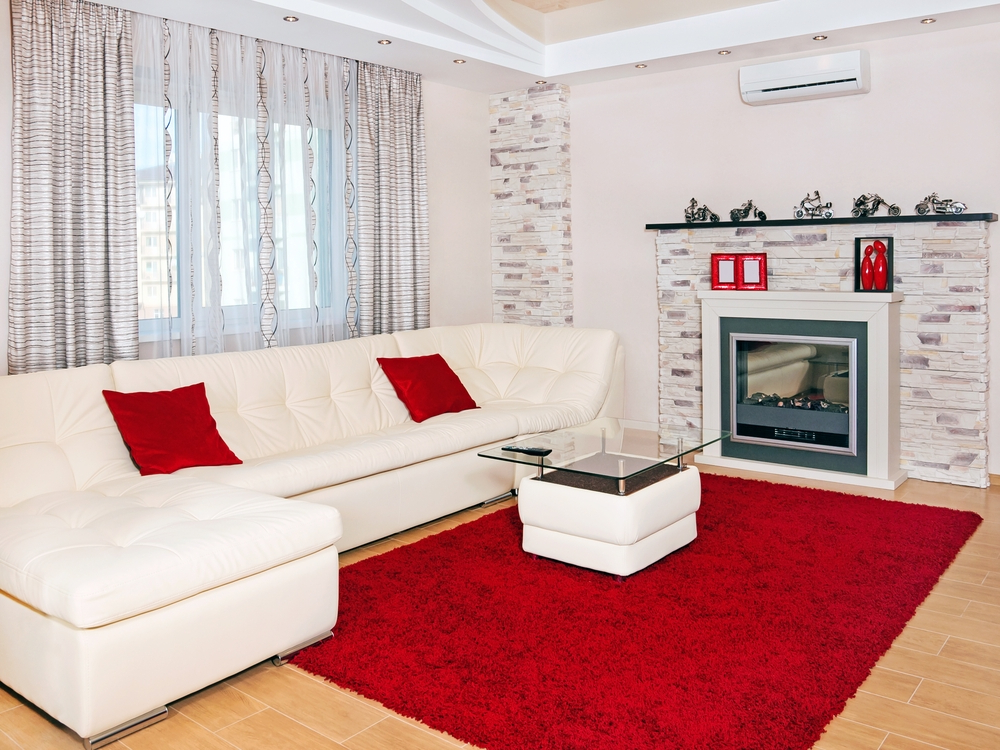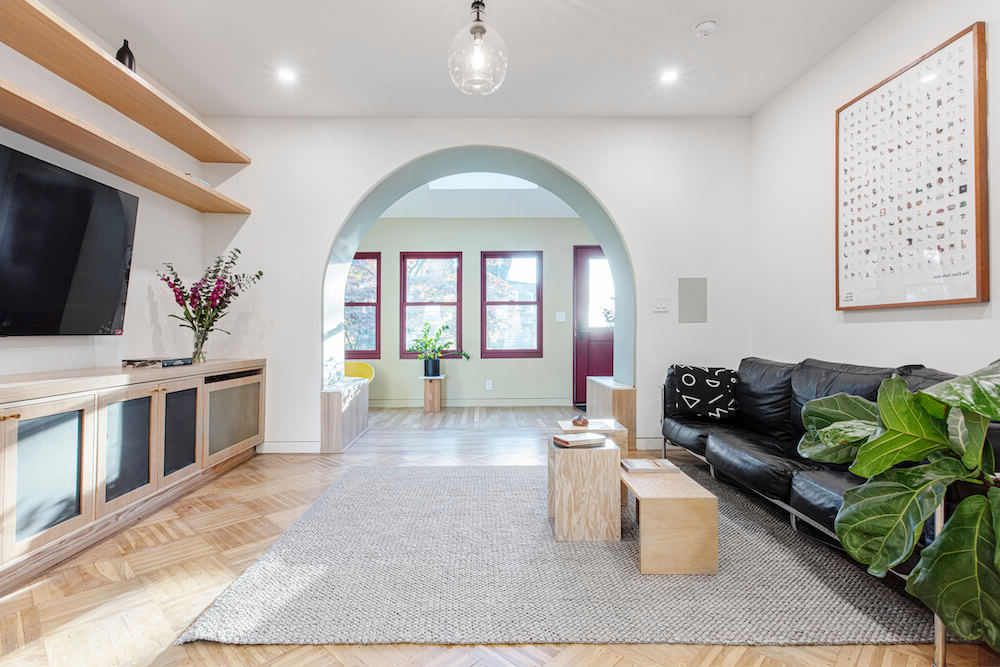We all know that a well-lit room feels different than one that’s dim. But what happens when you combine the right amount of natural light with thoughtful comfort features? That’s when your living room truly becomes a place where you want to spend time, no matter the season. It’s not just about having lots of windows or a big lamp. It’s about creating a balance that keeps things cozy in winter and cool in summer.
Picture this: You’re curled up on your favorite chair, sunlight streaming through large windows, casting gentle shadows across the room. The air feels fresh, the temperature is just right, and there’s something deeply satisfying about being surrounded by natural light. This isn’t just a dream – it’s achievable with some smart planning during your next living room renovation. Whether you’re building from scratch or updating your current space, understanding how to work with natural light and comfort can make all the difference between a room that feels like a temporary stop and one that feels like home.
Maximizing Natural Light Through Smart Window Choices
The first step toward a bright, welcoming living room starts with your windows. Not all windows are created equal when it comes to letting in light. Large, south-facing windows can flood a room with sunshine during winter months, while smaller, east-facing windows provide gentle morning light that’s perfect for starting your day. Consider installing floor-to-ceiling windows if possible – they make a huge visual impact and let in more daylight than traditional windows. But don’t forget about window treatments. Sheer curtains or blinds allow maximum light to enter while still giving you privacy when needed. Think about using reflective materials on walls opposite windows to bounce light deeper into the room. A light-colored wall behind a window can actually make the entire space feel brighter.
Choosing the Right Flooring for Year-Round Comfort
Flooring plays a surprisingly important role in both light and comfort. Lighter colored floors, whether wood, tile, or laminate, reflect more light and make spaces feel larger and more open. Dark floors absorb light and can make a room feel smaller and more enclosed. However, comfort matters too. Hardwood floors offer durability and a classic look, but they can feel cold in winter. Consider adding area rugs or even a small section of carpet to create warmth underfoot. For those who love a bit of texture, natural fiber rugs in neutral tones can add visual interest while providing comfort. The right flooring choice can make a significant difference in how your living room feels during different seasons.
Strategic Placement of Lighting Fixtures
Natural light isn’t always available, especially during cloudy days or evening hours. That’s where artificial lighting becomes essential. The key is layering different types of lights throughout your space. Start with ambient lighting – perhaps a central chandelier or ceiling fixture that provides overall illumination. Then add task lighting for specific activities like reading or working. Finally, incorporate accent lighting to highlight artwork or architectural features. Dimmer switches can be game-changers, allowing you to adjust the mood and brightness throughout the day. Smart lighting systems that automatically adjust based on time of day or occupancy can also help maintain consistent comfort levels.
Selecting Color Schemes That Enhance Light and Mood
Colors have a powerful effect on how we perceive light and space. Light, neutral colors like whites, creams, and soft grays naturally make rooms appear brighter and more spacious. These colors reflect rather than absorb light, which means they work particularly well in rooms with limited natural light. But don’t think you have to stick to boring whites – soft blues, warm beiges, and muted greens can create beautiful, calming atmospheres. Darker colors can be used strategically as accents or in smaller amounts to add depth and sophistication. The trick is balancing them properly. Too much dark color in a small room can make it feel cramped and gloomy. Consider using a color wheel to help guide your choices – complementary colors can create visual interest while maintaining harmony.
Incorporating Plants for Natural Beauty and Air Quality
Plants do far more than simply decorate your living room — they breathe life into it, both literally and figuratively. Beyond their visual charm, indoor plants purify the air by filtering toxins and increasing oxygen levels, helping to create a healthier and more refreshing environment. This subtle boost in air quality can make a significant difference in how a space feels, especially in modern homes where artificial materials and finishes can sometimes make rooms feel cold or impersonal. Adding greenery restores that missing sense of balance and brings a soothing touch of nature indoors.
When selecting plants, it’s essential to consider the lighting conditions of your space. Some varieties, like succulents, fiddle-leaf figs, and snake plants, thrive in bright, direct sunlight, making them perfect for spots near large windows. Others, such as peace lilies, pothos, or ZZ plants, flourish in lower-light areas where natural light is limited. By choosing plants that align with your home’s lighting environment, you’ll ensure they stay lush and vibrant year-round with minimal maintenance.
In terms of placement, use taller plants to frame corners or accentuate vertical lines near windows or seating areas. Smaller potted plants can adorn shelves, coffee tables, or sideboards, introducing organic texture and softness to the space. Hanging plants or wall-mounted planters are also excellent options for compact rooms, adding greenery without taking up valuable floor space.
What makes plants particularly special is their ever-changing nature. Leaves unfurl, colors deepen, and growth patterns shift with the seasons, giving your interior a sense of movement and renewal. Whether it’s a burst of fresh blooms in spring or the deep, calming greens of winter foliage, plants help your home evolve naturally throughout the year.
Even a few well-chosen plants can make a striking impact — turning a sterile room into a vibrant, welcoming retreat. Their presence creates a natural harmony that softens hard edges, enhances mood, and invites relaxation. In essence, plants are not just accessories; they’re living design elements that transform your space into a sanctuary of calm and vitality.
Creating Zones That Work for Different Activities
A well-designed living room should accommodate various activities throughout the day. Some areas might be perfect for quiet reading, others for entertaining guests, and still others for family gatherings. Creating distinct zones helps maximize both functionality and comfort. This doesn’t mean you need expensive furniture arrangements – simple changes like using rugs to define different areas, or placing a console table between seating areas, can create natural boundaries. Consider how natural light flows through these zones and plan accordingly. Maybe one zone gets morning light for breakfast, while another gets afternoon sun for relaxing. Having flexible spaces that can adapt to different needs makes your room feel more dynamic and useful.
Transforming your living room into a space that feels good year-round isn’t about following trends or spending a fortune on expensive renovations. It’s about understanding how natural light, comfort, and thoughtful design elements work together to create a space that truly serves you. By focusing on maximizing the light you already have, choosing materials that enhance both aesthetics and comfort, and creating zones that support different activities, you can build a living room that feels fresh and inviting no matter what time of year it is. The best part? These improvements often pay off in ways you might not expect – they can make your home feel more peaceful, boost your mood, and even improve your sleep quality. Every small change adds up to create a space that supports your lifestyle and brings joy to your daily routine.
















